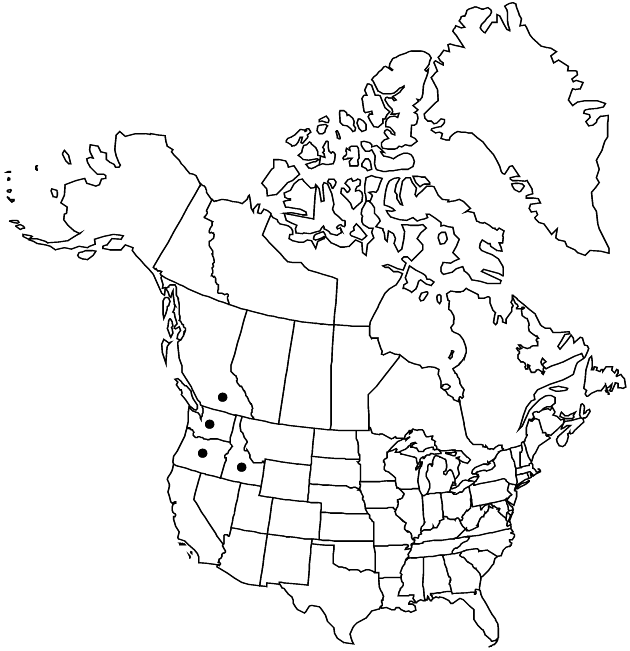Erigeron poliospermus
in A. Gray et al., Syn. Fl. N. Amer. 1(2): 210. 1884.
Perennials, 3–15 cm; taprooted, caudices simple or with relatively short and thick branches. Stems erect, sometimes branched, hirsute (hairs unequal), ± minutely glandular. Leaves mostly basal (persistent; petioles prominently ciliate, hairs spreading, thick-based); blades narrowly oblanceolate to spatulate, (20–)30–80 × 2–4(–12) mm, cauline sometimes continuing distally to about midstem, margins entire, usually ciliate, sometimes coarsely so, faces sparsely to densely hirsute, sometimes minutely glandular. Heads 1(–3) (from branches at or proximal to midstem). Involucres 5–9 × 9–20 mm. Phyllaries in 2–3 series, sparsely to densely hirsuto-villous to hirsute, minutely glandular. Ray florets 15–45 or 0; corollas usually pink to bluish purple, sometimes white, 5–14 mm, laminae coiling. Disc corollas (3.5–)4–5.5 mm. Cypselae 2.5–3 mm, 2-nerved, faces densely strigoso-sericeous (obscured); pappi: outer of setae, inner of 20–30 bristles.
Distribution

B.C., Idaho, Oreg., Wash.
Discussion
Varieties 3 (3 in the flora).
Selected References
None.
Lower Taxa
Key
| 1 | Stems branched at or proximal to midstem; basal leaves and branches originating on elongate internodes from proximal 1–6 cm of primary stems; stems and involucres glabrous or sparsely hirsute, densely minutely glandular | Erigeron poliospermus var. cereus |
| 1 | Stems simple; basal leaves and stems originating from compressed nodes at caudex apices; stems and involucres densely hirsute, sparsely minutely glandular | > 2 |
| 2 | Rays 0 | Erigeron poliospermus var. disciformis |
| 2 | Rays 15–45 | Erigeron poliospermus var. poliospermus |